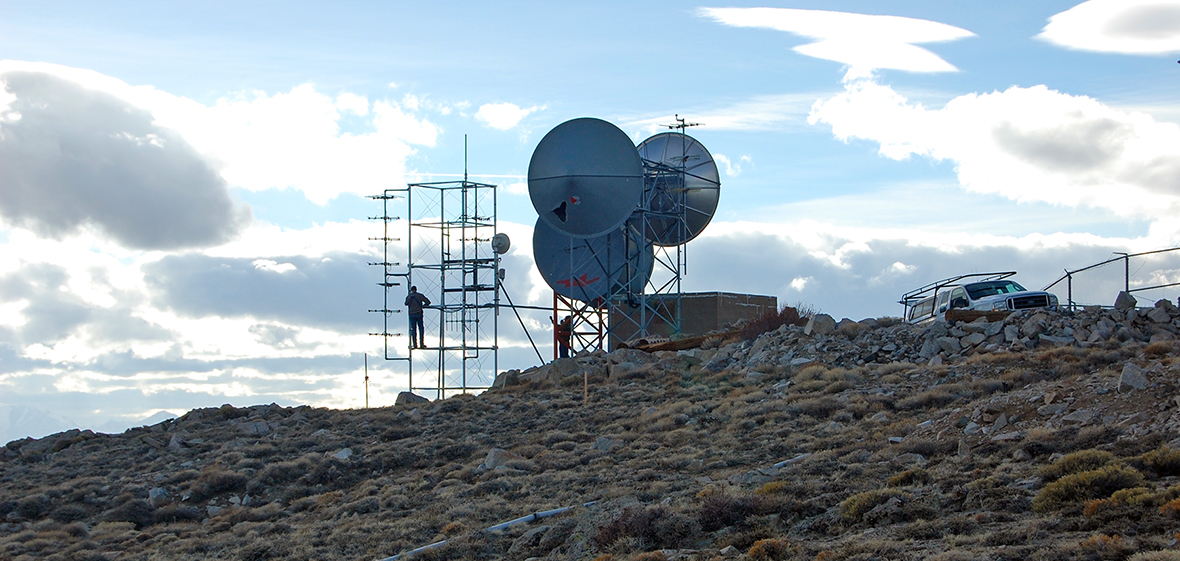Three magnitude 5.5 to 5.7 earthquakes struck about 18 miles southwest of Hawthorne, Nevada just after midnight Wednesday December 28, 2016, the Nevada Seismological Laboratory at the University of Nevada, Reno reported. Reports so far indicate minimal damage due to the remote nature of the earthquake sequence.
Strong shaking was reported in Hawthorne, Nevada and Bridgeport, California area, and the earthquake was felt as far away as San Francisco, Reno, Las Vegas and throughout California's Central Valley. More than 10,000 Nevada and California residents felt the events and posted responses to the USGS "Did you feel it?" website. As of Wednesday morning, 16 earthquakes larger than magnitude 3.0 have occurred, including two magnitude 4.0 to 4.1 tremblors.
The Hawthorne area is a seismically active region, with thousands of earthquakes recorded in a swarm during March and April in 2011. The 2011 sequence included 10 earthquakes of magnitude 4.0 to 4.4. Last night's sequence is about 5 miles due west of the 2011 sequence area. Recent activity, since 2015, has included earthquakes greater than 4.0 just west of Walker Lake that were also strongly felt in Hawthorne.
The town of Hawthorne located along US Highway 95 has a population of 3,200, is about 100 miles southeast of Reno and is 70 miles south of Fallon.
To better monitor the evolving sequence, members from the Nevada Seismological Laboratory, working with the Nevada Division of Emergency Management, California Office of Emergency Services, and the USGS, are investigating access to this remote region, including a snowbound communications site outside of Hawthorne that is critical for establishing radio links for portable stations that could be deployed to better monitor the sequence.
"Ongoing activity southwest of Hawthorne is a reminder to all Nevada and California citizens to be earthquake prepared, since this level of activity - or greater - can occur anywhere in our state," Graham Kent, director of the University's Nevada Seismological Laboratory, said. "In the event of an earthquake, everyone should remember to drop, cover and hold on. It's important to have a family plan, food and water supply for several days."
Updated information for activity associated with this earthquake available here.
The Nevada-Eastern California region has a history of large damaging earthquakes and citizens should always consider earthquake preparedness. Information is available at the Great Nevada Shakeout website, Washoe County Emergency.
The Nevada Seismological Laboratory, a public service department at the University of Nevada, Reno, is a member of the USGS Advanced National Seismic System and operates a network of about 150 real-time seismograph stations throughout the region providing earthquake information to Nevada and California citizens, the USGS, and local and state officials.
As a public safety reminder local and state agencies urge the public be prepared in the event an emergency causes you to be self-reliant for three days without utilities and electricity, water service, access to a supermarket or local services, or maybe even without response from police, fire or rescue.
The Nevada Division of Emergency Management/Homeland Security recommends preparing for such an event can start with four important steps:
- Be informed about emergencies that could happen in your community, and identify sources of information in your community that will be helpful before, during and after an emergency
- Make a plan for what to do in an emergency
- Build an emergency supply kit
- Get involved












